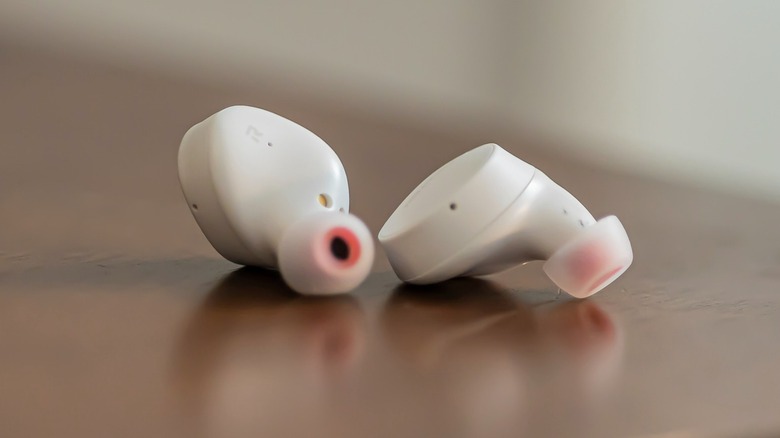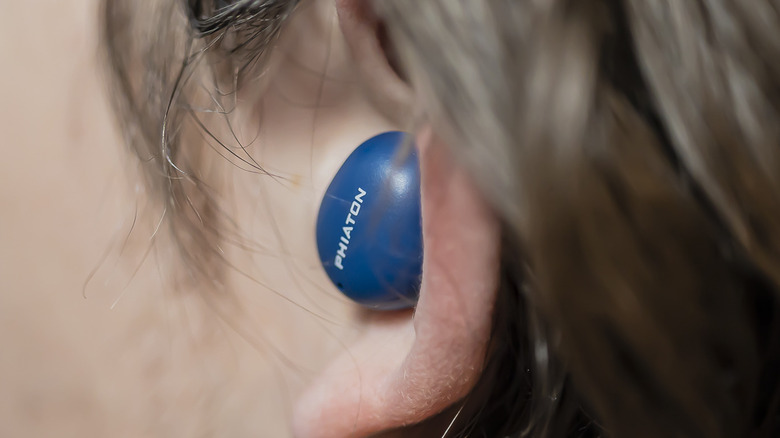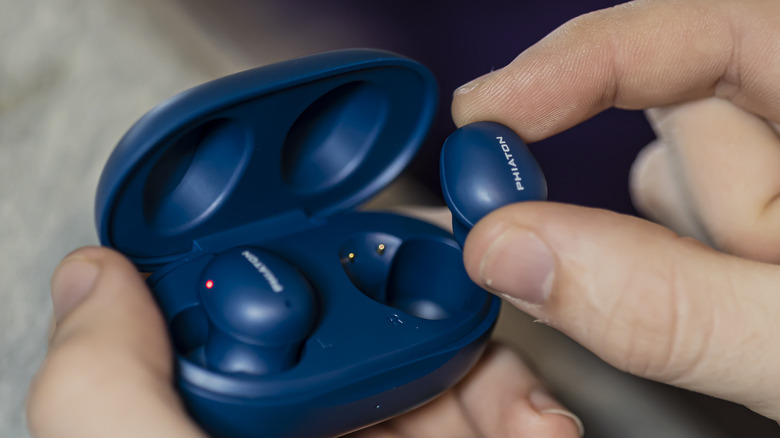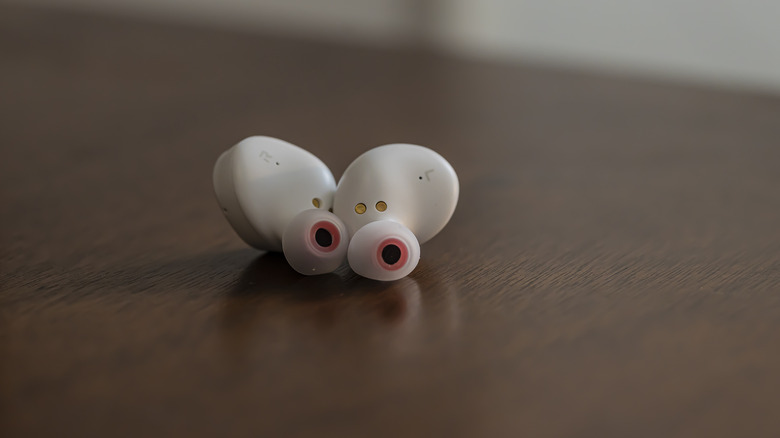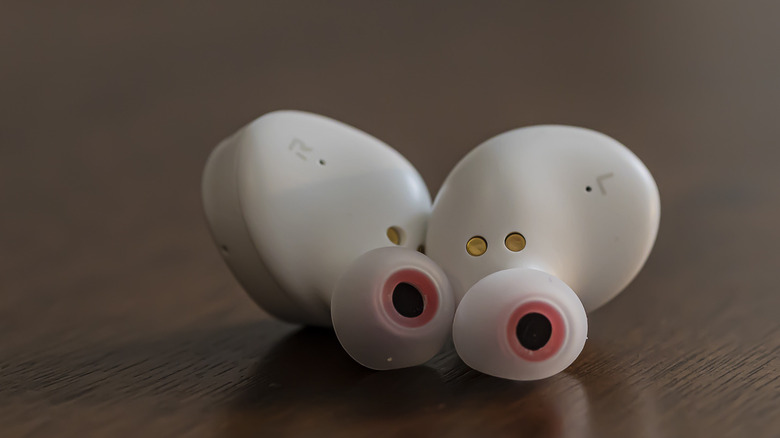Phiaton BonoBuds Lite Review: A Solid Investment For Casual Audiophiles
- Effective passive noise cancellation
- Secure, comfortable fit
- Fast charging
- App controls may be too simplified for some
We may receive a commission on purchases made from links.
Having decent audio equipment will make or break a listening experience — whether it's a phone conversation, a conference call, gaming, a podcast, or music. However, that doesn't necessarily mean you need to shell out astronomical amounts of cash for top-shelf audio tech to have satisfactory gear — in fact, there's no shortage of mid-level products that produce surprisingly lux sound for you to choose from.
One brand in this scene is Phiaton Corporation. Phiaton's specialty is affordable earbuds and headsets with high-end audio capability. Here we have Phaiton's BonoBuds Lite earbuds, the newest member of its "True Wireless" BonoBuds series. The price point alone commands some attention for the BonoBuds, but Phiaton's product also claims to utilize cutting-edge noise reduction technology powered by IntelliGo. According to Phiaton, BonoBuds Lite are perfect beginner-level earbuds with simple app integration and voice-powered assistance options.
While Phiaton didn't quite make our most recent list of best earbuds you can buy, could this pair be worth the cash? The BonoBuds join an already-cramped market of all-purpose, personal-use earbuds — so what makes these buds worth the dough above all of the others?
Phaiton provided a pair of BonoBuds and BonoBuds Lite for the purpose of this review. This review focuses on Bonobuds Lite, which are the newer model of BonoBuds. Photos in this review show both BonoBuds and BonoBuds Lite. BonoBuds are shown in blue, while BonoBuds Lite appear in white — aside from the color, both models look effectively the same and function only marginally different from one another — and not always in the way you'd expect.
A rudimentary app, but in a positive way
There's not a whole lot to the Phiaton app that can be downloaded for customization of the BonoBuds Lite's sound, which is in line with the brand's claims of a novice-audiophile-friendly product. I was briefly confused when the Bonobuds weren't discoverable by the app until I realized that they had to be taken out of the case. It would have been nice to have received instructions on that at some point in the early process, but I digress.
I can see why Phiaton developed these buds with beginners in mind. You are given just two controls over the earbuds through the app: turning on ambient noise, and making changes to the equalizer. The app doesn't get into splitting equalizer hairs but does do a good job of visually demonstrating the spectrum of sound from low to high. The setup is perfect for the intention of not wanting to overwhelm users. If these buds are really meant to be catered to beginners, though, I would have hoped to see a bit more explanation and guidance on the EQ screen for what each knob is changing.
Further, I think there was a missed opportunity to guide beginners through sound customization when Phiaton left out any customized equalizer presets — such as for different genres of music, podcasts, etc. You're given the opportunity to set an equalizer preference, but that seems like putting the cart before the horse.
A comfortable, secure fit
Back in October, I took a look at the new LG Gaming earbuds that claim to create a custom fit, molded to the unique contour of your ear. There was a lot about those earbuds that didn't impress me, but the custom LIGHTFORM fit was at least moderately impressive. An earbud fit that was literally created for you isn't something that you realize is needed until you experience it side-by-side with regular earbuds.
However, I enjoyed the comfort and stability of the Bonobuds Lite fit more so even than the custom LG buds. I put the Lites through many a trial of dynamic movement — walking, running, pilates — and the earbuds not only never budged but also were comfy enough to wear for hours. Perhaps the profile of the Phiaton earbuds — the way the interior piece curves more sharply away from the exterior piece than it does with the G Fits — has to do with this.
An all-around marvelous sound
The BonoBuds create a truly delightful listening experience for universal enjoyment. There doesn't seem to be enough sacrifice in audio detail at this budget-friendly price point for casual users — instrumental noises are rich and hearty, while voice-related audio isn't impacted by any feedback, distortion, or latency with Bluetooth 5.2.
I used the buds for some moderate gaming, too, and didn't personally experience any latency issues. The Phiaton buds aren't tailored for gaming — they don't come with a dongle, even, so Bluetooth is your only option — but they did well enough that I'd happily use them for gaming again.
Many leading sound products geared for gaming still operate on the 5.2 version of Bluetooth, so there's not a chasm of performance discrepancy between these earbuds for less than $50 and $150+ options — except for where bigger brands implement proprietary technology for making wireless audio connections in gaming faster and more reliable. But even the G Fits, in which Logitech uses proprietary connection tech, didn't dazzle me with a quicker or more stable audio connection. If you're a serious gamer, you probably want to stick to wired audio peripherals anyways, but casual players or beginners could get a ton of valuable use out of the BonoBuds.
Stellar ambient noise and noise canceling performance
If ambient mode is something that you use often in earbuds, you would be very satisfied with how well the Bonobuds perform. Television, voices, cars going by... when I wanted to be in tune with the environmental noises around me, it was easy to do so — except for when you tip the volume up over the 75%-ish mark of the earbuds' capability.
The passive noise cancellation worked remarkably well because of how well the buds seal in the ears. When the Echo Cancellation Noise Reduction technology kicked in, the ambient noise was reduced to nothing. I figured it would be easy enough for the buds to cancel out noise in my home, where there was just a TV playing and a dog barking outside, but the true test was taking them to a local cafe on a crowded Saturday morning. Environmental noise, of which there was plenty, was hushed to a fraction of its volume — perhaps only 15% of the exterior volume was able to leak through at most. For $49.99 and with no active noise cancellation, I would never have expected this level of performance.
BonoBuds vs. BonoBuds Lite
For $10 more, you can upgrade your purchase to the BonoBuds. Both products share several similarities, like Bluetooth 5.2 and quick 90-minute charging, but the case charges faster for the regular buds. They share the same suite of touch controls. The buds share an IPX4 moisture-proof rating, too. The Lites are only capable of 70 hours of battery life in standby mode, which is 30 hours less than the regular buds. However, the regular BonoBuds are only capable of six hours of active music play, and the Lites can reach 11 hours.
Overall, the audio quality between the two was effectively identical. The regular BonoBuds achieve more of an absolute noise cancellation — if that's your priority — but the battery life on the Lites definitely out-performed the regular buds — so because I'm not regularly in need of flawlessly effective noise cancellation, I wouldn't feel a necessity to invest the extra $10 in the regular BonoBuds. Both varieties come in a sleek, compact case perfectly sized for dropping into pockets or storing in a desk drawer.
Are BonoBuds worth it?
We have a two-part answer to this question. I would recommend BonoBuds Lite to pretty much anyone. They're affordable at $49.99 on Amazon, simple to set up and customize, and are adaptable enough to use for work conferences, studying, working out, gaming, or just music listening for pleasure. I think the battery life is impressive, the passive noise cancellation is remarkable, and the fit is ridiculously comfortable. The touch controls are quick to catch on to and fit the needs of most people.
I'm not sure that the regular BonoBuds are worth the cash, though, even if it's only a handful more bucks. Phiaton already outdid itself with the Lites, and I don't see any instance where I would need more noise cancellation than is provided in the less expensive buds. I think I personally would be annoyed with the lessened battery life, too — but maybe someone else would see more value in the additional 30 hours of passive battery time. If you want to take my word for it, though, the Lites are a worthwhile investment as a budget-friendly, daily-use pair of earbuds that produce complex, dynamic sound.
